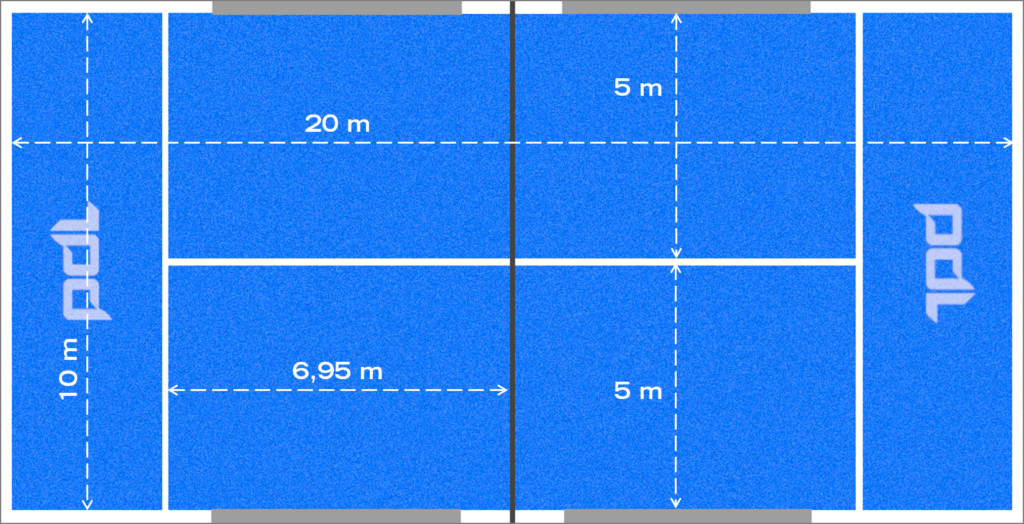How to play padel
Padel is a racket sport that is played in either double or single. Padel can be played both indoors and outdoors. The players are also limited to the padel court with the dimensions 10 meters long short sides and 20 meters long long sides. The padel course also has walls of glass and metal fences that enclose the whole court. The padel court is also divided by a tennis net and markings in the ground which defines the server boxes. The walls around the padel court also mean that the ball may bounce in these which contributes to rapid changes in the game.

Scoring in padel
The points count in padel is done in exactly the same way as in tennis. That is, you play the best of 3 or 5 sets, where in each set it is a matter of winning 6 games. A game’s score is therefore as follows: 0, 15, 30, 40, game. In a position of 40-40, you must win by two points for the game to be decided.
To win a set, you must first get to 6 won games. At a position of 5-5, in sets, you play to 7 won games. At a score of 6-6, you play a decisive game, also called tiebreak. A tiebreak is first played to 7 won points, where you must also win by at least two points.
The padel serve
The serve, however, differs from tennis. A serve in a padel is always struck underhand and the ball hit itself must take place at or below waist height. In padel, you should also bounce the ball in the ground at the serve, instead of as in tennis where the ball is thrown into the air. The bounce should take place behind your own server window and between the center line and the side wall. The same applies to feet and body, which should also be on the same side, ie the serving side. At least one foot should be in the ground. It is also not allowed to walk, run or jump at the serve. Minor foot movements that do not affect the service position are, however, accepted.
The serve should go diagonally and bounce in the opponent’s opposite server box. The serve is valid if it bounces up in the opponent’s glass wall, but if it bounces in the opponent’s grid, it is incorrect. When starting a new set, you choose who starts serving and if you want to change the serve side.
The number of serves is just like in tennis, i.e. a first serve and a second serve. Which means that if you miss your first serve, you have another chance. If, on the other hand, you miss your second serve, there will be a double error and the points will go to the opponent. If the ball touches the net at the serve before it passes over, it must also be turned over.
The padel walls
The walls are always part of the game, although there are a number of rules for how they can be used. When you are the one who receives a ball, you can let it bounce up in the glass wall after it has bounced on the ground, the ball is then still alive. It is also allowed to hit the ball through its own wall and then go over to the opponent’s side.
The ball is also alive if it first bounces in the ground and then up on the grid (something that does not apply to serve). If, on the other hand, you hit the ball in the grid on your own side, you lose the ball. On its own side, the rule is that you may only use the glass wall. If a ball goes directly into the opponent’s grid / glass, i.e. does not bounce in the ground first, the ball is counted as outside.
How to win points?
Points in padel you win if:
- The ball bounces in the ground twice on the opponent’s side
- The opponent hits the ball into the net
- The opponent hits out the ball, i.e. directly out of the cage or directly on one of your walls
- The opponent hits the ball in his own net
- An opponent is hit by the ball somewhere other than the racket
- The opponent makes a “double blow”
- The opponent touches the net or net post
- The opponent hits the ball in front of the net, if it has not been over on your side before (eg coming back from the back wall)
- Your ball bounces up on the cage frame after the correct stroke in the ground. Note, when playing off the court, the ball may bounce as many times as possible on the cage frame
- The opponent’s ball hits an outside object. For example, lamps or ceiling beams
- The ball hits a lying ball on the opponent’s side
